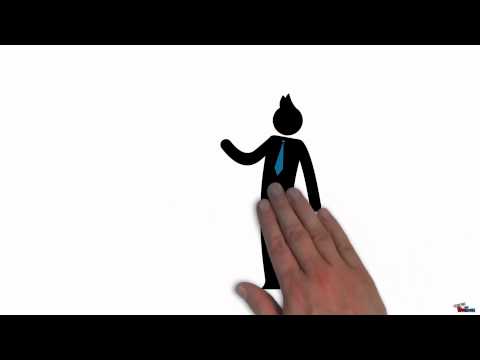


As we discussed in the previous section, science is always evolving, albeit sometimes slowly. One study is not enough to make a guideline or recommendation or to cure a disease. Science is a stepwise process that continuously builds on past evidence and develops towards a well-accepted consensus, although even that can be questioned as new evidence emerges. Unfortunately, the way scientific findings are communicated to the general public can sometimes be inaccurate or confusing. In today’s world, where instant Internet access is just a click away, it’s easy to be overwhelmed or misled if you don’t know where to go for reliable nutrition information. Therefore, it’s important to know how to find accurate sources of nutrition information and how to interpret nutrition-related stories when you see them.

“New study shows that margarine contributes to arterial plaque.” “Asian study reveals that two cups of coffee per day can have detrimental effects on the nervous system.” How do you react when you read headlines like this? Do you boycott margarine and coffee? When reading nutrition-related claims, articles, websites, or advertisements, always remember that one study neither proves or disproves anything. Readers who may be looking for answers to complex nutrition questions can quickly misconstrue such statements and be led down a path of misinformation, especially if the information is coming from a source that isn’t credible. Listed below are ways that you can develop a discerning eye when reading news highlighting nutrition science and research.
While there is a wealth of information about nutrition on the internet and in books and magazines, it can be challenging to separate the accurate information from the hype and half-truths. You can use the CRAAPP Test 1,2 to help you determine the validity of the resources you encounter and the information they provide. By applying the following principles, you can be confident that the information is credible. We’ve added several notes to the traditional CRAAPP Test to help you expand your analysis 3 and apply it to nutrition information.
When was it written or published? Has the website been updated recently?
Do you need current information, or will older sources meet your research need?
Where is your topic in the information cycle?
Note: In general, newer articles are more likely to provide up-to-date perspectives on nutrition science, so as a starting point, look for those published in the last 5-7 years. However, it depends on the question that you’re researching. In some areas, nutrition science hasn’t changed much in recent years, or you may be interested in historical background on the question. In either case, an older article would be appropriate.
Does it meet stated requirements of your assignment?
Does it meet your information needs/answer your research question?
Is the information at an appropriate level or for your intended audience?
Who is the creator/author/publisher/source/sponsor? Are they reputable?
What are the author’s credentials and their affiliations to groups, organizations, agencies or universities?
What type of authority does the creator have? For example, do they have subject expertise (scholar), social position (public office, title), or special experience?
Note: The authority on nutrition information would be a registered dietitian nutritionist (RDN), a professional with advanced degree(s) in nutrition (MS or PhD), or a physician with appropriate education and expertise in nutrition. (This will be discussed in more detail on the next page). Look for sources authored or reviewed by experts with this level of authority or written by people who seek out and include their expertise in the article.
Is the information reliable, truthful, and correct?
Does the creator cite sources for data or quotations? Who did they cite?
Are they cherry-picking facts to support their argument?
Is the source peer-reviewed, or reviewed by an editor? Do other sources support the information presented?
Are there spelling, grammar, and typo errors that demonstrate inaccuracy?
Note: Oftentimes, checking the accuracy of information in a given article or website means opening a new internet tab and doing some additional sleuthing to check the claims against other sources.
Is the intent of the website to inform, persuade, entertain, or sell something?
Does the point of view seem impartial or biased?
Is the content primarily opinion? Is it balanced with other viewpoints?
Who is the intended audience?
Note: Particularly if you’re looking at an organization’s website, do some background research on the organization to see who funds it and what is the purpose of the group. That information can help you determine if their point-of-view is likely to be biased.
What kind of effort was put into the creation and delivery of this information?
Is it a Tweet? A blog post? A YouTube video? A press release?
Was it researched, revised, or reviewed by others before published?
How does this format fit your information needs or requirements of assignment?
The CRAAPP Test is a six-letter mnemonic device for evaluating the credibility and validity of information found through various sources, including websites and social media channels. The CRAAPP Test can be particularly useful in evaluating nutrition related news and articles.

VIDEO: “Evaluating Internet Sources” by Cooperative Library Instruction Project, Lane Community College Library, (July 21, 2015), 7:09.
When it comes to nutrition advice, the adage holds true that “if it sounds too good to be true, it probably is.” There are several tell-tale signs of junk science—untested or unproven claims or ideas usually meant to push an agenda or promote special interests. In addition to using the CRAAPP Test to decipher nutrition information, you can also use these simple guidelines to spot red flags of junk science. When you see one or more of these red flags in an article or resource, it’s safe to say you should at least take the information with a grain of salt, if not avoid it altogether.

With the mass quantities of nutrition articles and stories circulating in media outlets each week, it’s easy to feel overwhelmed and unsure of what to believe. But by using the tips outlined above, you’ll be armed with the tools needed to decipher every story you read and decide for yourself how it applies to your own nutrition and health goals.